Peter’s Blog, July 5th
A Primer on Flour
Hi Everybody,
I’ve been getting a lot e-mails asking about flour and how all the different types work for pizza. Here’s a quick, and by no means comprehensive look at some of your options. There is so much good flour available that you can’t go wrong, but with all the interest in Italian style flour as well as the various types of American flour, it might be helpful to know the following:
— Italian “Tipo” Double Zero (—00—) Flour is favored by people who have been to Naples or to one of the new American VPN (Vera Pizza Napoletana) pizzerias and love the soft texture and natural sweetness. The term “double zero” refers to both the purity of the flour — culled from the endosperm (white part) of the wheat berry and very finely milled, usually of moderate protein levels (about 9.5% – 10.5%) comparable to American All Purpose flour. It has wonderful extensibility (as opposed to elasticity) which makes it easy to stretch for pizza. It also does not absorb as much water as American flour, and doesn’t require as long a fermentation period to release it’s wonderful flavor. It does not usually come with malted barley flour, as American flour does to promote browning, because it is designed to be baked at very high temperatures for a very short time (less than two minutes, usually closer to one minute) so the malt enzymes could cause it to burn. The most well known brand, now available to the American marketplace at some specialty stores and via the Forno Bravo e-store (and from Orlando Foods via their distributors, if you have a pizzeria), is Caputo. Another brand, of similar quality, is San Felice, but it is harder to track down if you don’t have a pizzeria. By the way, “Italian” flour is not made with only Italian grown wheat but rather a blend of wheat, some of it from the USA, that meets the specifications (specs) of the mills. Also, there are a few -00- types, some used for pasta, some for bread, and some for pizza, so be sure to get the right one for your situation.
— American Double Zero (—00—) Flour is a new option, now available via Central Milling and possibly other mills. But the American version tends to contain higher protein flour (close to 11.5% – 12%) than the Italian brands, but yet retains the Italian extensibility qualities due to the specific wheat selections. It feels very soft because it is finely milled, and absorbs far more water than the Italian brands. Like the Italian, it is unbleached and retains a beautiful, golden hue. Central Milling now makes a few types, some with malt and salt added, for pizzerias or for home cooks not planning to bake at super hot temperatures. The Central Milling flour is certified organic and has a soft, sweet flavor very similar to the Italian brands. Ordering info listed in a previous Peter’s Blog.
— Unbleached Bread Flour is available at all supermarkets, produced by a number of major mills such as General Mills, King Arthur, Pillsbury (now owned by General Mills), Con Agra, and many regional mills (used primarily by restaurants and bakeries). The protein level is somewhere around 12.5% and the flour makes excellent bread, pizza, and focaccia, especially when made at higher hydration levels than the Italian flour. Because the protein level is higher, it has a chewier texture, a kind of al dente quality, that many of us find appealing. It is usually sold with a very small amount of diastatic malted flour added, which helps promote browning due to the enzyme activity of the malt.
— High Gluten Flour is often favored by American pizzerias because it is so strong that it can be stretched or spun out into larger pizzas, up to 18″ in diameter and in some places, even wider. The hardness of the protein (gluten) is offset by the addition of oil or shortening, up to 6% and in some instances 8% of the flour weight, and usually some sugar or sweetener is also added. While the artisan pizzerias tend to steer away from this flour, the general public loves pizzas made with it because of the large slices and ability to hold a slice straight out without “droopage.” I think of it as street pizza or college pizza — loaded with cheese and other toppings. This flour is hard to find at supermarkets but restaurants and pizzerias can order it from their distributors and, if you want to use it (it is especially favored for bagels, multi-grain and rye breads, as well as for this style of pizza) you might be able to buy some from your local bakery or pizzeria.
Final note: While everybody has their own favorite types I always fall back on this truism: There are only two kinds of pizza — good and very good; it’s hard to make bad pizza unless you burn it. So stick with what you like and play around with the other types as you expand your repertoire. American (and Canadian) flour is the best in the world and usually finds its way into Italian and French brands, so remember that it’s really about finding the type (tipo) of flour suited to your preference and then learning how to use it. And, of course, there’s only one way to learn how, and that’s by making lots and lots of pizza.
Recent Articles by Peter Reinhart
- “Tommy & Atticus” in Redondo Beach, CA. A Sourdough Success Story
- Howard Brownstein on Turnaround and Crisis Management
- Randy Clemens and Forest Farming in Uruguay — The Back to The Earth Movement is Back!
- It’s not too late to chase your dreams: “Pizza From the Heart” A New Book by Paulie and Mary Ann Gee
- Kyle Ahlgren on the Artisan Baking Center Online Classes (and a special offer)
- Multi-James Beard Nominee Cathy Whims of Portland’s Nostrana and her Brand New Book
Comments
Add Comment
You must be logged in to post a comment.




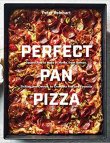
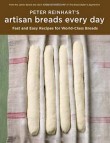

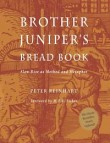
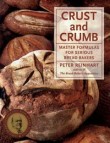
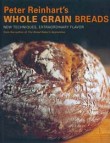
Awesome article. I will definitely have to try the American “00” from Central milling.
I have been able to order high gluten flour online from King Arthur. It is 14% protein.
the joy of having a wood fired oven in my backyard is tempered by the fact i’m a slow learner. which kind of flour responds best to the high heat of wood? i sense another cookbook…
I think the –00– flour is really designed for the high heat, not because of the wheat itself but because it doesn’t have added malted barley flour, as regular bread flour does. As a result, it doesn’t caramelize too quickly (the barley malt promotes sugar breakout from the starch) at the super high temperatures of a wood-fired oven. That said, I’ve made great pizza in my sweet little Primavera oven with both bread flour and –00–flour. You have to try a few types of flour (or even blend them) to arrive at your own conclusion, and I think if there are ten of us chiming in on this discussion we will probably arrive at eleven different opinions. And, yes, we can all be right.
Peter
I recently found and purchased a bag of Italian tipo “00” flour that I will be using to make pizza in my home oven which only reaches 550 degrees. Would the quality of the pizza be improved if I added barley malt and if so, how much should I be adding?